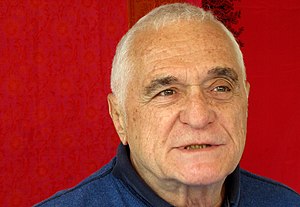John Giorno
Relevance
Morrissey describes meeting John Giorno in Autobiography:
Wikipedia Information
 |
John Giorno (December 4, 1936 – October 11, 2019) was an American poet and performance artist. He founded the not-for-profit production company Giorno Poetry Systems and organized a number of early multimedia poetry experiments and events. Giorno's creative journey was marked by collaborations, groundbreaking initiatives, and a deep exploration of diverse art forms. He gained prominence through his association with pop art luminary Andy Warhol, sparking a creative partnership that propelled his career to new heights. Giorno's artistic evolution was shaped by his encounters with Warhol and other influential figures. His notable appearance in Warhol's 1964 film Sleep, where he slept on camera for over five hours, introduced audiences to his unique blend of performance and artistic expression. Giorno's creative trajectory was marked by an array of multimedia poetry experiments, one of which was the pioneering "Dial-A-Poem" project. This venture allowed individuals to access brief poems by contemporary poets via telephone, forging a novel connection between technology and poetry. Collaboration was a hallmark of Giorno's work, as he joined forces with renowned artists, including William S. Burroughs, Patti Smith, Laurie Anderson, Philip Glass, and Robert Mapplethorpe. His poetic style evolved over time, encompassing techniques such as appropriation, cut-ups, and montage. His signature double-column poems, characterized by repetition, mirrored the vocal distortions he employed in his performances. As Giorno's career progressed, his work began to incorporate political themes, notably his active protests against the Vietnam War. Beyond his artistic endeavors, Giorno embraced spirituality and activism. A transformative trip to India in 1971 introduced him to Tibetan Buddhism, particularly the Nyingma tradition. He was one of the earliest Western students of Tibetan Buddhism, inviting various Tibetan teachers to New York City and hosting them. As a committed AIDS activist, he founded the AIDS Treatment Project in 1984, providing vital support to those affected by the epidemic. Giorno's impact extended globally, as he continued to perform, collaborate, and exhibit his work, leaving an enduring legacy in the worlds of poetry, performance art, and multimedia exploration.